September 26, 2024
TLDR
Sensors continuously evaluate specific conditions, ensuring that downstream blocks execute only when prerequisites are met or within a defined timeframe. By integrating sensor blocks, data workflows become more reliable and resource-efficient, minimizing unnecessary computations and maintaining data consistency. The article covers the fundamentals of sensor blocks, their configuration, practical examples across various platforms, and the benefits they bring to data pipeline management.
Outline
Introduction
What are Sensor Blocks?
Key Features of Sensor Blocks
Setting Up Sensor Blocks
Adding a Sensor to Your Pipeline
Configuring a Sensor
Integrating Sensor Blocks into Pipelines
Benefits of Using Sensor Blocks
Conclusion
Introduction
Smooth, efficient, and automated data pipelines are fundamental to successful data engineering projects. As pipelines grow in complexity, orchestrating their components to work inter-connectedly is burdensome. Redundant computations, data inconsistencies, and inefficient resource utilization can hinder the effectiveness of data workflows. Sensor blocks in Mage offer a solution to these challenges by introducing conditional execution and monitoring capabilities. This article explores how sensor blocks can be leveraged to optimize data pipelines, ensuring they run only when necessary and under the right conditions.

What are Sensor blocks?
A sensor block in Mage is a specialized feature that continuously monitors specific conditions within a data pipeline. Unlike regular blocks that execute based on a predefined schedule or trigger, sensor blocks remain active, evaluating conditions until they are satisfied or a set period elapses. This continuous evaluation ensures that dependent blocks execute only when the necessary prerequisites are met, enhancing the reliability and efficiency of the entire pipeline.
Key features of sensor blocks
Continuous Evaluation: Sensors persistently check for specified conditions, ensuring timely execution of dependent blocks.Conditional Execution: Downstream blocks wait for sensors to validate conditions before initiating, preventing premature or redundant runs.Time-bound Monitoring: Sensors can be configured to cease evaluation after a certain timeframe, balancing responsiveness with resource usage.Integration with External Pipelines: Sensors can monitor the status of external pipelines or specific blocks within them, facilitating cross-pipeline dependencies.
Setting up sensor blocks
In the practical exercise below, we will be executing a pipeline in Mage, based on the completion of a different pipeline. In other words, Pipeline B depends on the completion of Pipeline A. Once Pipeline A completes running, the sensor will check to see if it has run and if it did then it will begin running Pipeline B. In order to complete this exercise, you should have a pipeline set up and running in Mage.
Adding a sensor to your pipeline
Integrating a sensor block into your Mage pipeline is straightforward. Sensors can be added just like any other block within the pipeline interface. Navigate to the desired pipeline, select the option to add a new block, and choose the sensor type from the available templates.
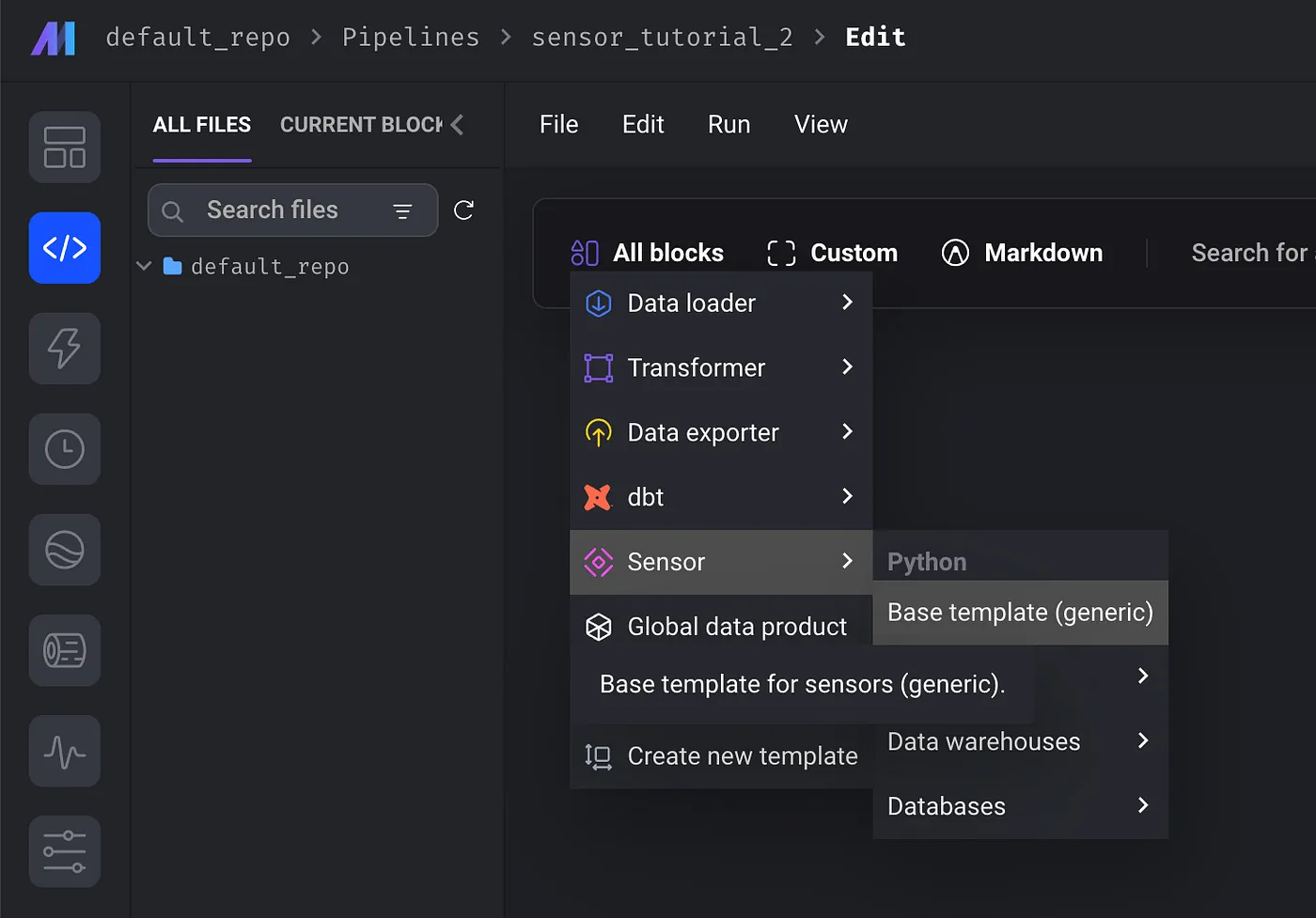
Configuring a sensor
Configuring a sensor involves defining the conditions it should monitor. This typically includes specifying the target pipeline or block, the duration for which the sensor should remain active, and any specific criteria that must be met for the sensor to trigger downstream execution. The configuration process ensures that the sensor aligns with the pipeline’s operational requirements and dependencies.
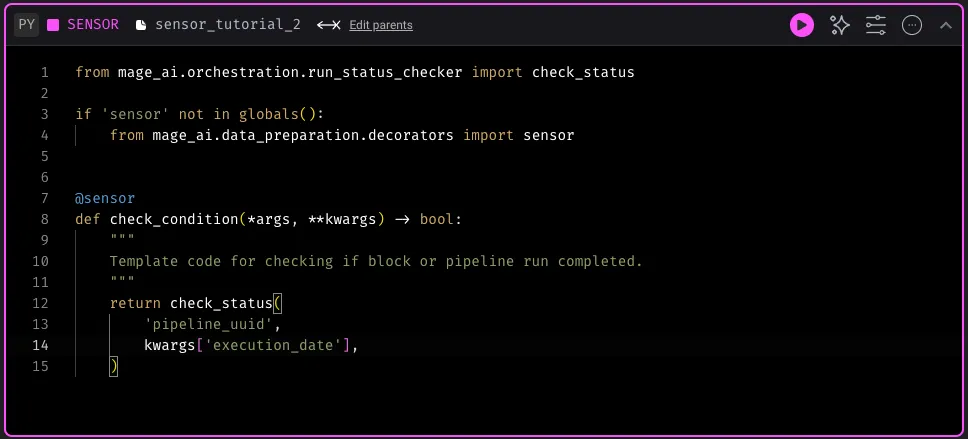
Integrating sensor blocks into pipelines
Once sensor blocks are configured, integrating them into your data pipelines enhances control and efficiency. Follow these steps to incorporate sensor blocks effectively:
Step 1 — Add a sensor block: Within your target pipeline, insert a new sensor block where you need conditional execution. (see Figure 1)
Step 2 — Select the desired sensor template: Choose from the available templates (e.g., Google BigQuery, MySQL) based on your data sources and requirements. In the case of this tutorial add the “Base template (generic)” block.
Step 3 — Configure the sensor: Input the necessary parameters, such as pipeline UUIDs, block UUIDs, and time thresholds, to tailor the sensor’s monitoring behavior. (see Figure 2)
Step 4 — Connect downstream blocks: Connect any downstream blocks for the pipeline to the sensor.
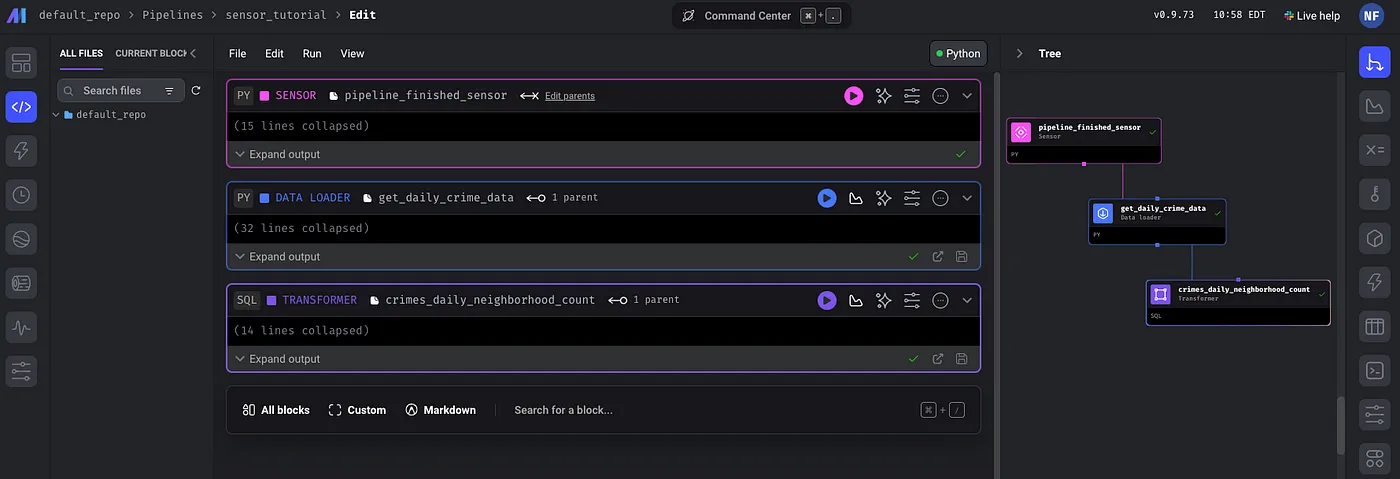
Step 5 — Test the configuration: Run the pipeline to verify that the sensor behaves as expected, triggering dependent blocks appropriately.
Step 6 — Set up a trigger: Navigate to the triggers page and set up a trigger for the pipeline to run.
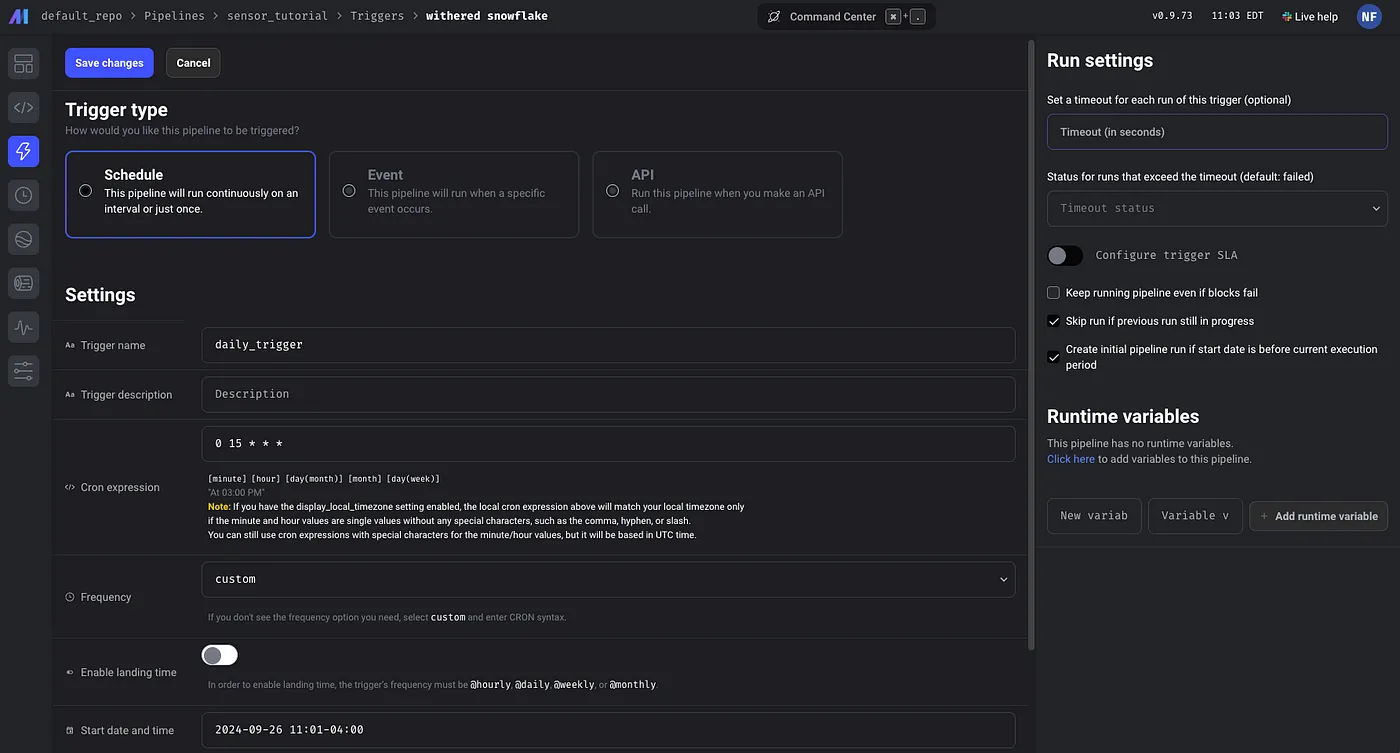
Benefits of using sensor blocks
Enhanced reliability: Sensors ensure that downstream processes execute only when necessary conditions are met, reducing the risk of errors and ensuring data integrity.
Resource efficiency: By preventing unnecessary executions, sensors optimize computational resource usage, leading to cost savings and improved pipeline performance.
Improved data consistency: Consistent monitoring ensures that data dependencies are respected, maintaining uniformity across different stages of the pipeline.
Simplified pipeline management: Sensors streamline the orchestration of complex pipelines by managing dependencies and execution flow automatically.
Scalability: As data pipelines grow, sensors facilitate scalable management by handling conditional executions without adding significant complexity.
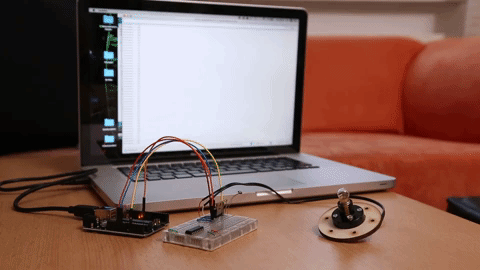
Conclusion
Sensor blocks in Mage AI represent a pivotal advancement in data pipeline management, offering a blend of conditional execution, continuous monitoring, and resource optimization. By integrating sensors, data engineers can develop pipelines that are not only efficient but also resilient and adaptable to varying data conditions. Whether monitoring database queries, file existence in S3 buckets, or the status of external pipelines, sensor blocks provide the necessary tools to ensure that data workflows operate smoothly and reliably.
Embracing sensor blocks is a strategic move towards more intelligent and efficient data operations. As data landscapes become increasingly intricate, the ability to manage and orchestrate pipeline components with precision becomes indispensable. With sensor blocks, Mage empowers organizations to elevate their data engineering practices, ensuring that data pipelines are both robust and scalable.
Are you ready to enhance your data pipelines with intelligent monitoring and conditional execution? Explore the capabilities of Mage’s sensor blocks and transform the way you manage your data workflows today.
Check out Mage Pro to further improve your pipelines and workflows.















